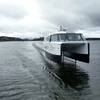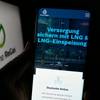The LNG industry is undergoing a dramatic transformation. North American activity (the majority of which is committed spend) is driving a return to growth in global capital expenditure. A wave of new LNG carrier newbuilds will also be required to support a huge increase in traded base-load LNG volumes.
Douglas-Westwood’s (DW) new World LNG Market Forecast 2017-2021 indicates global LNG expenditure will total $284 billion (bn) between 2017 and 2021. This represents a 50% growth compared with the preceding five-year period.
Report author, Mark Adeosun, commented, “Liquefaction terminals will remain the principal driver of expenditure with spend in the segment totalling $192bn. This will subsequently lead to a 42% increase in liquefaction capacity by the end of the forecast period. Despite challenging times for shipyards, with only four LNG carriers ordered in 2016 (YTD) – unit orders are expected to bounce back in the near-term."
Mark added: "Over 150 additional carriers yet to be ordered are likely to be required for additional export capacity coming onstream in the latter years of the forecast. Overall we expect expenditure on LNG carriers will represent 19% of global expenditure.
“As the final set of Australian LNG projects start operating in 2017, global LNG expenditure will be concentrated in North America. This regional swing in investment will result in the United States (US) & Canada accounting for 17% of global liquefaction capacity by 2021 – with capex totalling $105bn, 36% of global expenditure over the forecast period," he continued.
Mark said:" Of the six liquefaction terminals in the US, four of the facilities are currently under construction, with additional trains to be added before the end of the period. Beyond the forecast, some export terminals currently in the planning and approval stages will continue to support expenditure. We have, however, taken a conservative view on additional projects, given the current economic climate, and expect many of the early-stage projects not to progress past the initial planning/consent phase.
“Over the long-term, LNG demand will continue to grow, as countries seek to diversify their energy supply. It is expected that delays in committing to new nuclear capacity and limitations of renewable technology in base-load applications will support continued newbuild of combined-cycle gas power plants. This, in addition to declining local production in some key consumer nations, will be a compelling driver for continued investment in these capital intensive projects.”












